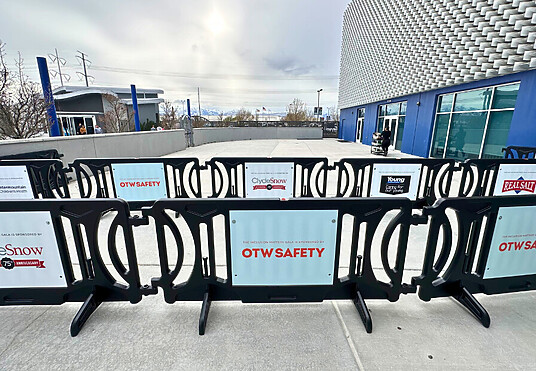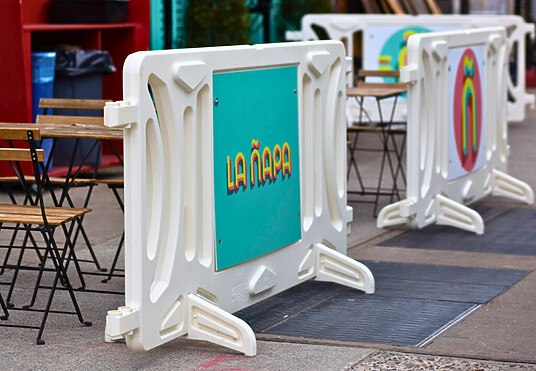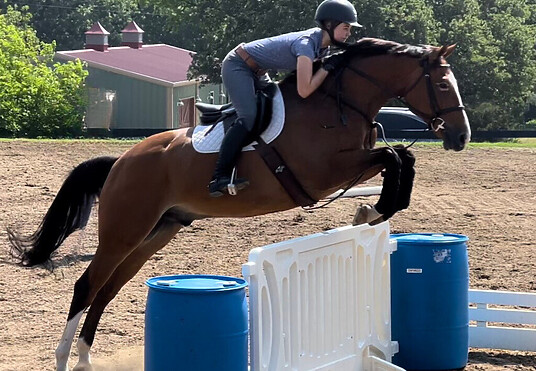Crowd Safety at Glastonbury

Glastonbury, we love to see it!
OTW’s long-held belief is that safety comes in many forms and has many facets. Aside from physical safety and the precautions taken to ensure it, a few are diversity, inclusivity, sustainability, and initiatives that make a difference in the health and well-being of all types of individuals.
We were thrilled to see these elements and more at this year’s Glastonbury Festival at Worthy Farm in Somerset, England. Running from June 21-25, 2023, the festival was headlined on the main stage by big names like Elton John, Guns N’ Roses, and the Arctic Monkeys, with many other artists like Lizzo, Lewis Capaldi, and Lana Del Ray performing on stages across the festival. This sold-out weekend boasted over 200,000 fans, and, with that, came the need for clear and intentional safety, security, and wellness plans included in their logistical planning.
Safe spaces for all
Large crowds have the tendency to become overwhelming for many, and Glastonbury was no exception. With the packed fields and crush of fans at every stage, it’s no surprise that many sought out the “calm sensory spaces” provided by Diverse. This organization “aims to provide social contact and activities for autistic people. Diverse groups offer a relaxed, and friendly atmosphere where people can enjoy being with others and be themselves. No one is made to do anything that they are not comfortable with.” The two provided spaces gave individuals of all neurotypes the opportunity to step away from the hustle of the main festival area and enjoy a calming space when they needed to do so – thus ensuring more intentionality in overseeing the well-being of neuro-diverse folk. As festivals are not often known for this type of consideration, we think this was a huge step in the right direction for the festival scene as a whole!
Fun for all ages
While Glastonbury may not have always been known as a “family-friendly” event, in recent years that has begun to change. After a brief hiatus of the festival during the height of Covid, many festival-goers found themselves with young minis and decided to bring them along to last years event. As children 12 and under aren’t charged to enter with a ticketed adult (unlike many other festivals), there’s no real way to know just how many tots were running around Glastonbury this year, but we do know that event organizers were ready for more kids than ever this year. They made provisions this year that were geared towards helping those with children, such as an on-site movie theatre for a break during the day, and issued warnings about specific areas of the festival that might not be kid friendly – especially after dark. Kids are whole people – worthy of fun and adventure – and we love that organizers made a concerted effort to not only allow children but planned for them in advance.
Sustainability and green spaces galore
Glastonbury has a long history of dedication to sustainability. Their website states: “With our history firmly rooted in activism and our profound connection with our rural heritage, all of us at Glastonbury Festival are passionately committed to creating a cleaner, more fair, sustainable future for all”. Their green policies are strict, and the mantra of “Love The Farm, Leave No Trace. Reuse. Reduce. Respect.” is widely circulated throughout the festival.
But is sustainability for a festival a pipe dream? Due to trash, waste, and other remnants of large crowds, events are often hard-pressed to leave the grounds on which they run better than they found them. Glastonbury must work hard, then, to remediate the potential damage to nature. With many reminders to only use what is necessary in terms of paper products, water, and more, as well as mitigating general waste by encouraging festival-goers to only bring the things they need and to leave nothing behind, they begin to do so. On the grounds, you’ll find a purpose-built recycling center where refuse is sorted and recycled. These measures combat the festival’s impact on the land as best as organizers can during the festival itself, but clean-up after the fact remains.
The impact on the grounds at Worthy Farm might be notable, but Glastonbury does take action to reconcile its overall environmental impact. The two main sources of emissions come from private vehicle transport and lighting/electricity. To combat this, it is highly encouraged to refrain from using a car to reach the festival, and shuttles are provided from the nearest train stations in order to ferry attendees back and forth. Glastonbury organizers are also light-years ahead in the way that the stages and electric areas are powered, using battery-power systems and generators powered using hydrotreated vegetable oil (HVO). Their “Green Fields” stage is even run on 100% renewable electricity.
Emily Eavis, daughter of original founder Michael Eavis and current co-organizer, said to Yahoo of the impact: “We hope that the greater good outweighs the negative output, which I think it does, I think people come here and they find out new ways of being, of existing, of consuming. They discover new politics, they discover new green ideas, and it fires people up.”
She added: “I hope that’s come back, the politics, and I hope people are more aware of the environment they’re living in from being here, because it’s a great way to demonstrate that you are responsible for the space that you live in, but we’ve got a long way to go.”
Fun and sustainability for years to come – with some tips from OTW!
OTW has long been dedicated to sustainability, community, and quality, and we are thrilled to see the innovative strides the Glastonbury festival organizers are continually making in order to improve the festival experience for their guests and bring awareness about the need for climate action and sustainability.
With OTW crowd control barricades, we think the message could be even clearer! Because our barricades are completely reusable and have a years-long life (and are 100% recyclable once their life as a barricade is over), they are perfect for fronting the message of “reuse, reduce, recycle, respect”. Using reusable barricades decreases environmental impact (as opposed to temporary, disposable measures), and they are safer (read: sturdier and stronger) in general for all involved. They are also perfect for sectioning off restricted areas and separating stages from excited fans.
In addition to the “green” aspect of using crowd control barricades, they are also perfect for showcasing any sponsors that may have contributed to a festival! The sturdy, generously-sized signs are secured front and center to any pedestrian barricade – making it easy to display logos of sponsors and their missions, or even area or festival hours, ID stations, Safe Spaces (like Diverse hosted), and more. Make it easy for people to know where they are and where they’re going; this knowledge helps make experiences better for all.
As a company in the event production business ourselves, we know that a vast amount of planning goes into every festival, and Glastonbury is no different. As mentioned, we’re excited about the strides Glastonbury organizers are making every year in their safety and sustainability efforts, and (might we say) we’d love to see what a Glastonbury festival with OTW barricades looked like in the near future!


